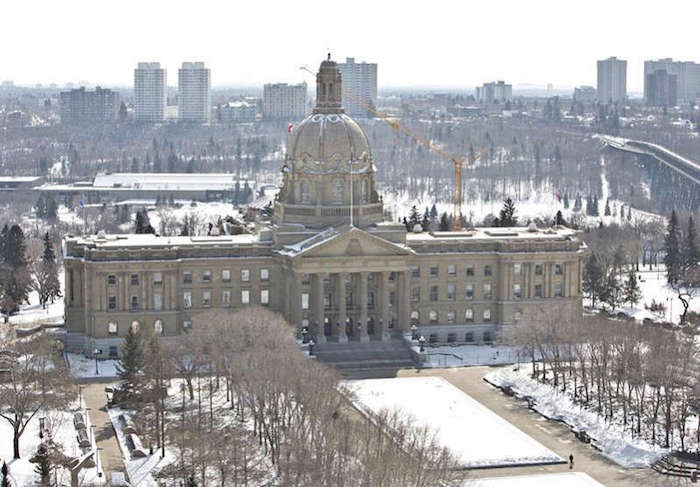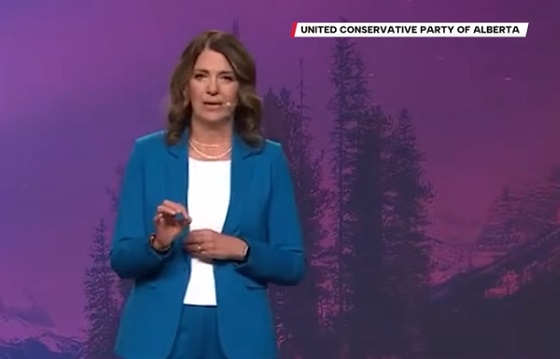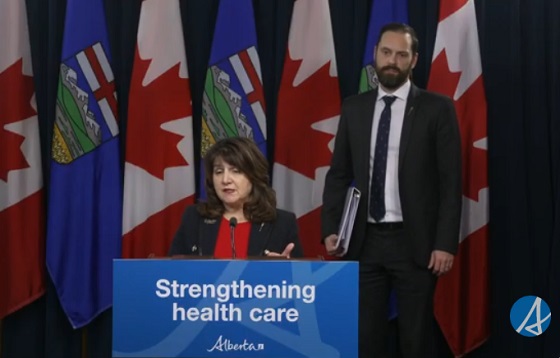Alberta
Alberta going after entrepreneurs and immigrants working as health-care professionals

Improving the Alberta Advantage Immigration Program
Changes to the Alberta Advantage Immigration Program (AAIP) will make it easier for in-demand workers and entrepreneurs to become permanent residents.
Alberta’s economy has momentum, and Alberta’s government is committed to further growth and diversification so the province remains the economic engine of Canada. In 2022, nearly 50,000 people from around the world chose Alberta as the place to invest, work and raise their families.
AAIP is an economic immigration program that enables Alberta to nominate qualified workers in in-demand sectors for permanent residency. By improving the program, Alberta will be more competitive in attracting skilled newcomers from across the world.
“Alberta is a land of opportunity. In our province, you can find the career you want, take home a strong and regular paycheque, and still spend time with family and friends. Not only do people around the world want to come here, we want them to come here to be a part of our communities and our prosperity, and help Alberta continue to grow and succeed.”
Alberta’s government is making five improvements to the AAIP that will help both businesses and international skilled workers.
Changes to the Rural Entrepreneur and Rural Renewal streams will help Alberta’s rural communities remain vibrant and grow. A lowered investment threshold of $100,000 for the Rural Entrepreneur Stream will will open the door to additional qualified entrepreneurs who wish to establish or purchase an existing business in participating rural Alberta communities. Removing the requirement for a letter from a settlement agency under the Rural Renewal Stream will help rural communities attract, recruit and welcome newcomers based on local needs.
“Bringing more workers needed in the province will be key to continuing to grow Alberta’s economy and meeting our labour shortages. These changes to AAIP show our commitment to making Alberta one of the best places in the world to put down roots, contribute positively to your community and be prosperous.”
Alberta has the best front-line health care workers in the world and the province will work to have the right supports in place to ensure Albertans get the care they need when and where they need it. A new, dedicated pathway to attract medical professionals to Alberta means that up to 30 per cent of Alberta’s Express Entry Stream allocation in 2023 will be reserved for health-care professionals with an Alberta job offer from a health-care sector employer and who meet the requirements to work in one of the eligible health occupations.
Two more changes will see a new phone line that directly connects AAIP staff members with clients and collaboration with the federal Economic Mobility Pathways Pilot. Participating in this pilot will help refugees with the skills and qualifications needed in Canada to immigrate through existing economic programs.
“These policy changes are aimed squarely at filling needed skills gaps, boosting vibrancy in rural communities, and creating more economic opportunity for refugees. We applaud these moves to enhance economic immigration in a way that is responsive to specific provincial needs.”
“From HV Global Immigration, we would like to thank Minister Rajan Sawhney for listening and proactively implementing reasonable changes to the AAIP. Apart from the other improvements, change in minimum investment at AAIP’s Rural Entrepreneur Stream would definitely help new and prospective immigrants to qualify for this program. This change will generate more revenue and create jobs for Albertans. Last, but not least, the new information phone line is going to be a big relief. Thanks once again Minister Sawhney for your hard work and listening to our ideas and solutions.”
Quick facts
- Alberta currently has about 100,000 job openings across the province.
- Alberta is forecasting a cumulative job shortage of 33,100 workers by 2025 across several occupations, skill levels and sectors (source: Alberta’s Occupational Outlook, 2021-2030).
- Immigration, Refugees and Citizenship Canada sets AAIP’s annual nomination limits.
- Alberta recently received an increase in nominations:
- 9,750 nominations in 2023
- 10,140 nominations in 2024 (estimated)
- 10,849 nominations in 2025 estimated)
- Alberta recently received an increase in nominations:
Alberta
Keynote address of Premier Danielle Smith at 2025 UCP AGM

Alberta
Net Zero goal is a fundamental flaw in the Ottawa-Alberta MOU

From the Fraser Institute
By Jason Clemens and Elmira Aliakbari
The challenge of GHG emissions in 2050 is not in the industrial world but rather in the developing world, where there is still significant basic energy consumption using timber and biomass.
The new Memorandum of Understanding (MOU) between the federal and Alberta governments lays the groundwork for substantial energy projects and infrastructure development over the next two-and-a-half decades. It is by all accounts a step forward, though, there’s debate about how large and meaningful that step actually is. There is, however, a fundamental flaw in the foundation of the agreement: it’s commitment to net zero in Canada by 2050.
The first point of agreement in the MOU on the first page of text states: “Canada and Alberta remain committed to achieving net zero greenhouse gas emissions by 2050.” In practice, it’s incredibly difficult to offset emissions with tree planting or other projects that reduce “net” emissions, so the effect of committing to “net zero” by 2050 means that both governments agree that Canada should produce very close to zero actual greenhouse gas (GHG) emissions. Consider the massive changes in energy production, home heating, transportation and agriculture that would be needed to achieve this goal.
So, what’s wrong with Canada’s net zero 2050 and the larger United Nations’ global goal for the same?
Let’s first understand the global context of GHG reductions based on a recent study by internationally-recognized scholar Vaclav Smil. Two key insights from the study. First, despite trillions being spent plus international agreements and regulatory measures starting back in 1997 with the original Kyoto agreement, global fossil fuel consumption between then and 2023 increased by 55 per cent.
Second, fossil fuels as a share of total global energy declined from 86 per cent in 1997 to 82 per cent in 2022, again, despite trillions of dollars in spending plus regulatory requirements to force a transition away from fossil fuels to zero emission energies. The idea that globally we can achieve zero emissions over the next two-and-a-half decades is pure fantasy. Even if there is an historic technological breakthrough, it will take decades to actually transition to a new energy source(s).
Let’s now understand the Canada-specific context. A recent study examined all the measures introduced over the last decade as part of the national plan to reduce emissions to achieve net zero by 2050. The study concluded that significant economic costs would be imposed on Canadians by these measures: inflation-adjusted GDP would be 7 per cent lower, income per worker would be more than $8,000 lower and approximately 250,000 jobs would be lost. Moreover, these costs would not get Canada to net zero. The study concluded that only 70 per cent of the net zero emissions goal would be achieved despite these significant costs, which means even greater costs would be imposed on Canadians to fully achieve net zero.
It’s important to return to a global picture to fully understand why net zero makes no sense for Canada within a worldwide context. Using projections from the International Energy Agency (IEA) in its latest World Energy Outlook, the current expectation is that in 2050, advanced countries including Canada and the other G7 countries will represent less than 25 per cent of global emissions. The developing world, which includes China, India, the entirety of Africa and much of South America, is estimated to represent at least 70 per cent of global emissions in 2050.
Simply put, the challenge of GHG emissions in 2050 is not in the industrial world but rather in the developing world, where there is still significant basic energy consumption using timber and biomass. A globally-coordinated effort, which is really what the U.N. should be doing rather than fantasizing about net zero, would see industrial countries like Canada that are capable of increasing their energy production exporting more to these developing countries so that high-emitting energy sources are replaced by lower-emitting energy sources. This would actually reduce global GHGs while simultaneously stimulating economic growth.
Consider a recent study that calculated the implications of doubling natural gas production in Canada and exporting it to China to replace coal-fired power. The conclusion was that there would be a massive reduction in global GHGs equivalent to almost 90 per cent of Canada’s total annual emissions. In these types of substitution arrangements, the GHGs would increase in energy-producing countries like Canada but global GHGs would be reduced, which is the ultimate goal of not only the U.N. but also the Carney and Smith governments as per the MOU.
Finally, the agreement ignores a basic law of economics. The first lesson in the very first class of any economics program is that resources are limited. At any given point in time, we only have so much labour, raw materials, time, etc. In other words, when we choose to do one project, the real cost is foregoing the other projects that could have been undertaken. Economics is mostly about trying to understand how to maximize the use of limited resources.
The MOU requires massive, literally hundreds of billions of dollars to be used to create nuclear power, other zero-emitting power sources and transmission systems all in the name of being able to produce low or even zero-emitting oil and gas while also moving to towards net zero.
These resources cannot be used for other purposes and it’s impossible to imagine what alternative companies or industries would have been invested in. What we do know is that workers, entrepreneurs, businessowners and investors are not making these decisions. Rather, politicians and bureaucrats in Ottawa and Edmonton are making these decisions but they won’t pay any price if they’re wrong. Canadians pay the price. Just consider the financial fiasco unfolding now with Ottawa, Ontario and Quebec’s subsidies (i.e. corporate welfare) for electric vehicle batteries.
Understanding the fundamentally flawed commitment to Canadian net zero rather than understanding a larger global context of GHG emissions lays at the heart of the recent MOU and unfortunately for Canadians will continue to guide flawed and expensive policies. Until we get the net zero policies right, we’re going to continue to spend enormous resources on projects with limited returns, costing all Canadians.
-

 Alberta1 day ago
Alberta1 day agoNet Zero goal is a fundamental flaw in the Ottawa-Alberta MOU
-

 Addictions2 days ago
Addictions2 days agoThe Death We Manage, the Life We Forget
-

 Food1 day ago
Food1 day agoCanada Still Serves Up Food Dyes The FDA Has Banned
-

 Crime2 days ago
Crime2 days agoVancouver police seize fentanyl and grenade launcher in opioid-overdose crisis zone
-

 National1 day ago
National1 day agoEco-radical Canadian Cabinet minister resigns after oil deal approved
-

 Daily Caller2 days ago
Daily Caller2 days agoJohn Kerry Lurches Back Onto Global Stage For One Final Gasp
-

 Addictions1 day ago
Addictions1 day agoManitoba Is Doubling Down On A Failed Drug Policy
-

 COVID-1921 hours ago
COVID-1921 hours agoThe dangers of mRNA vaccines explained by Dr. John Campbell











